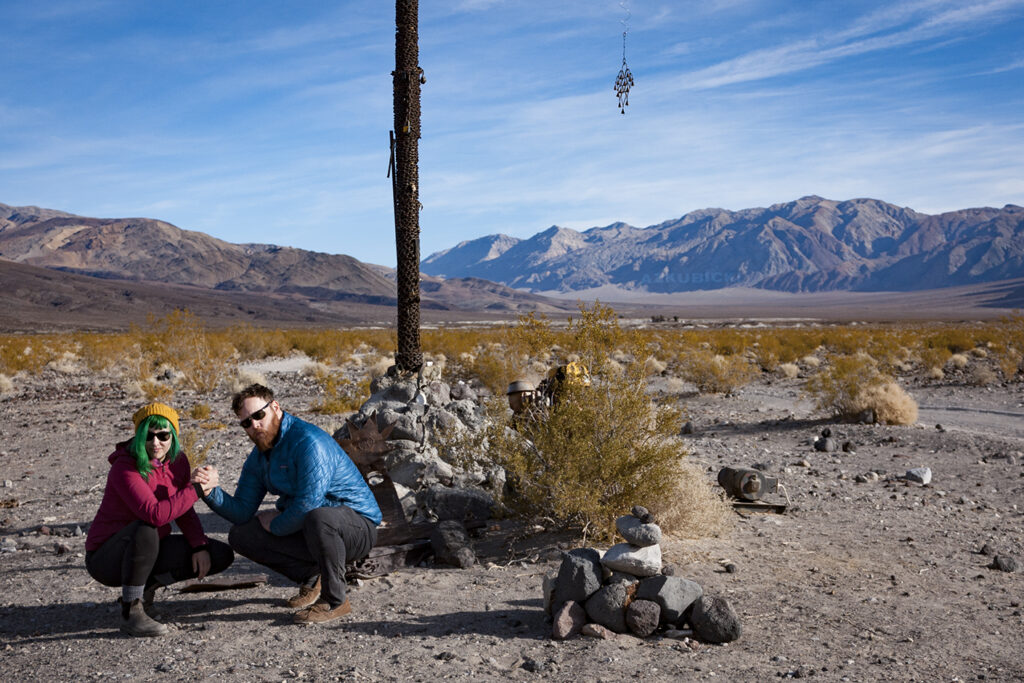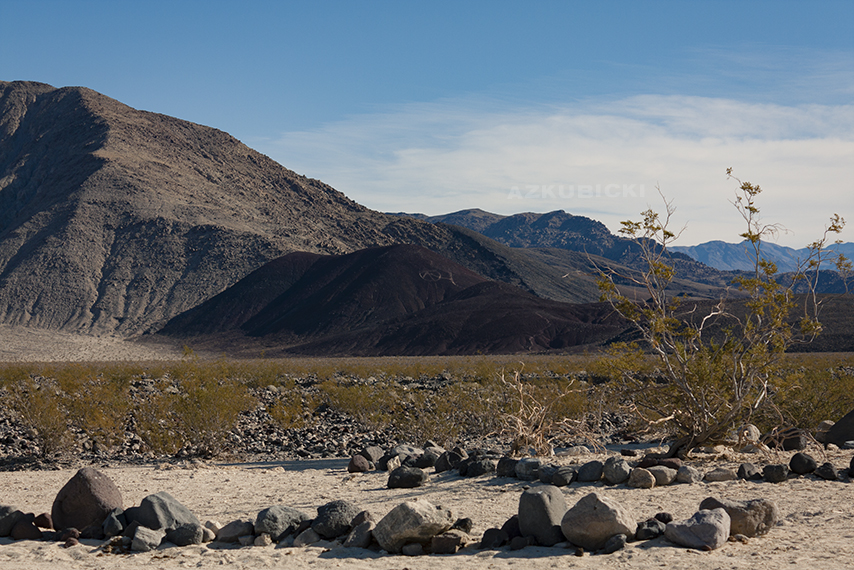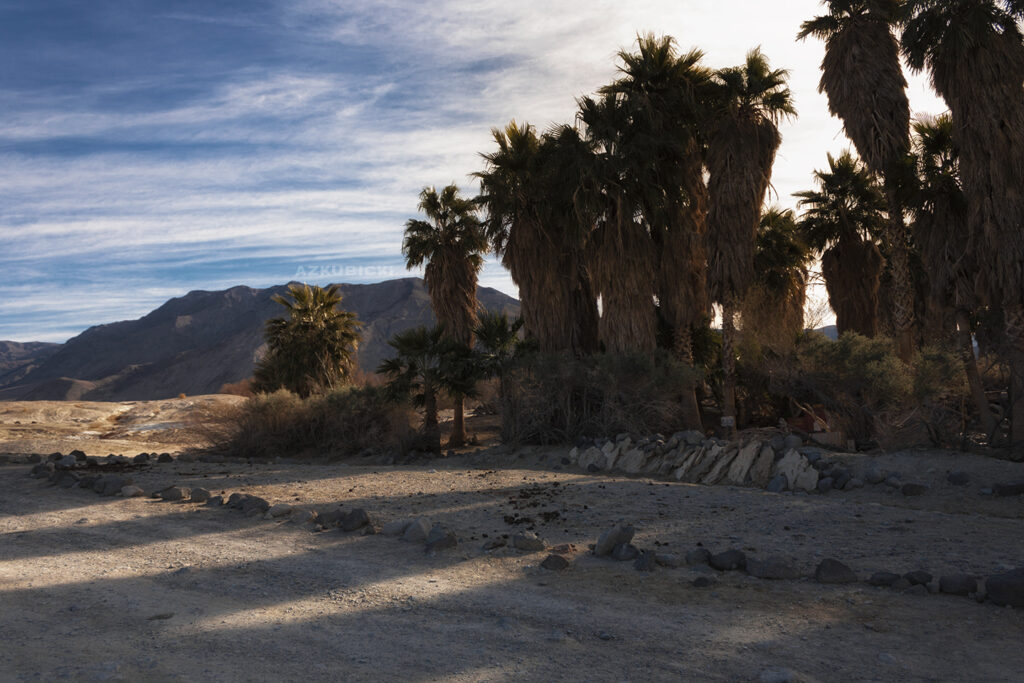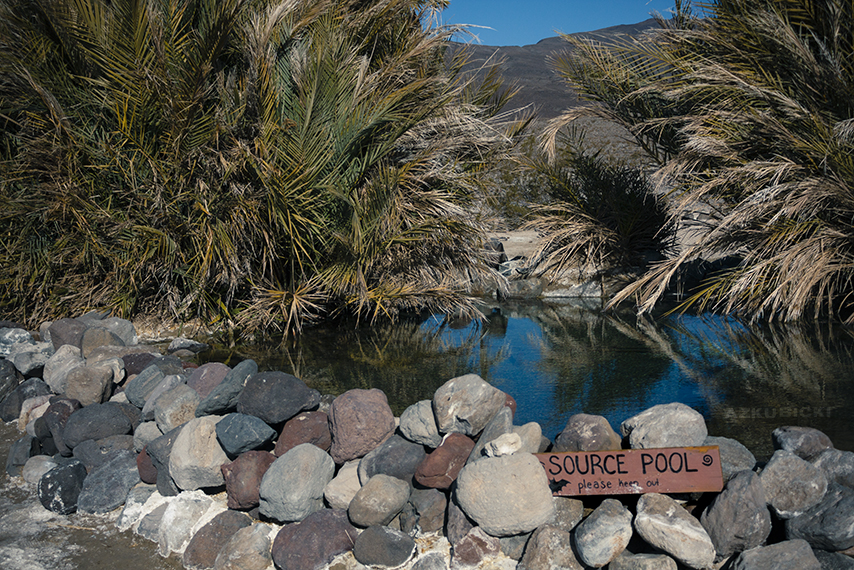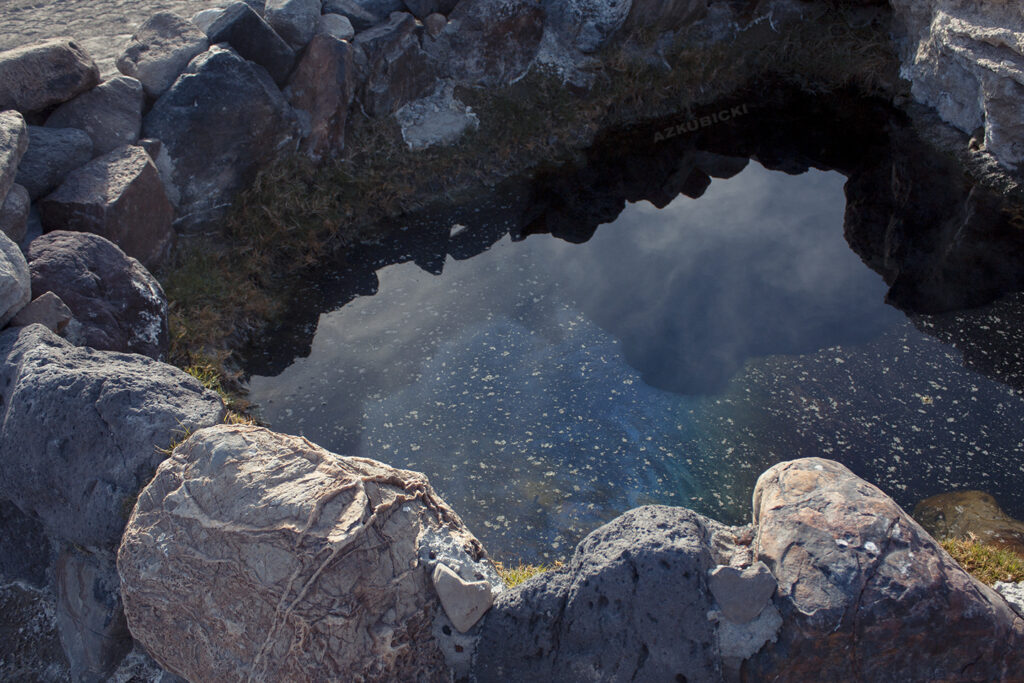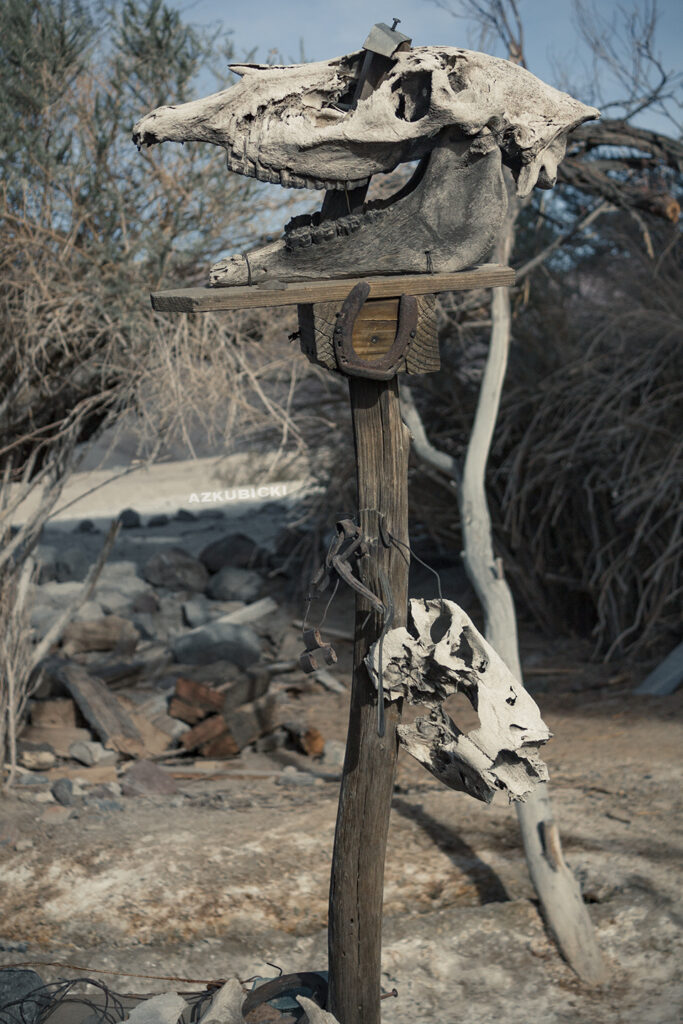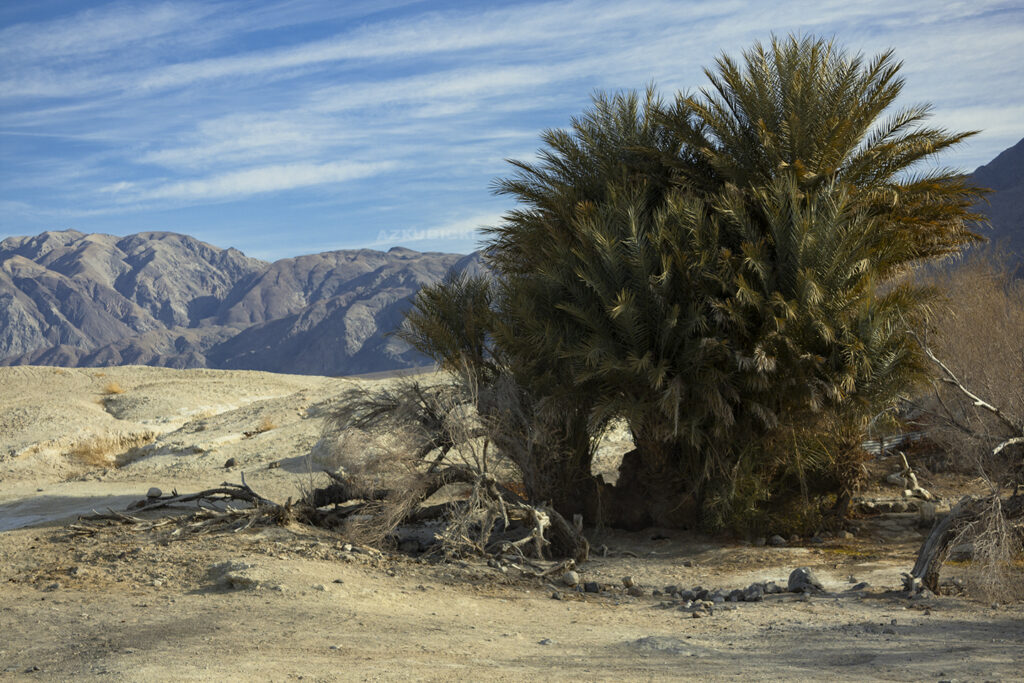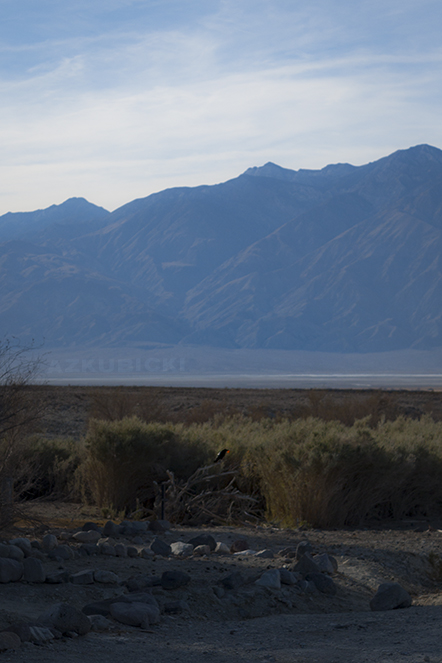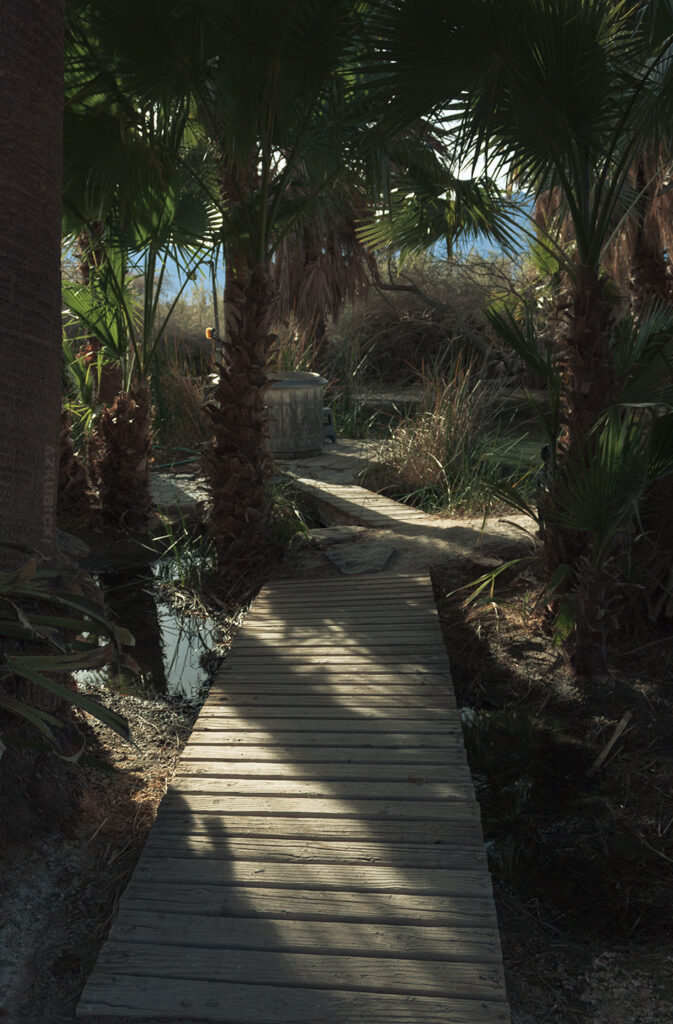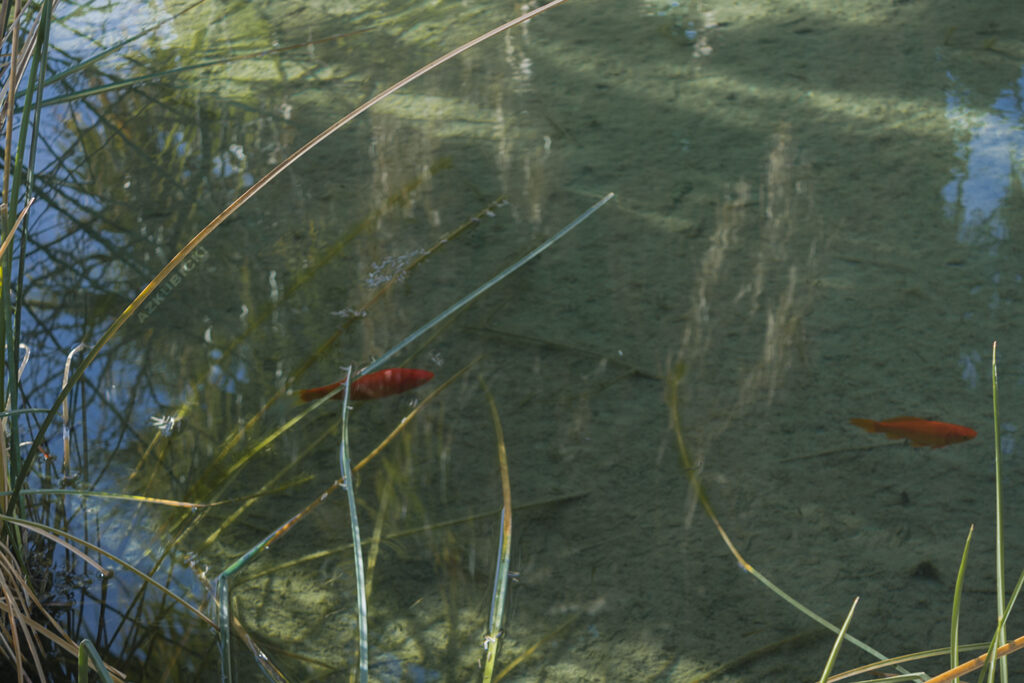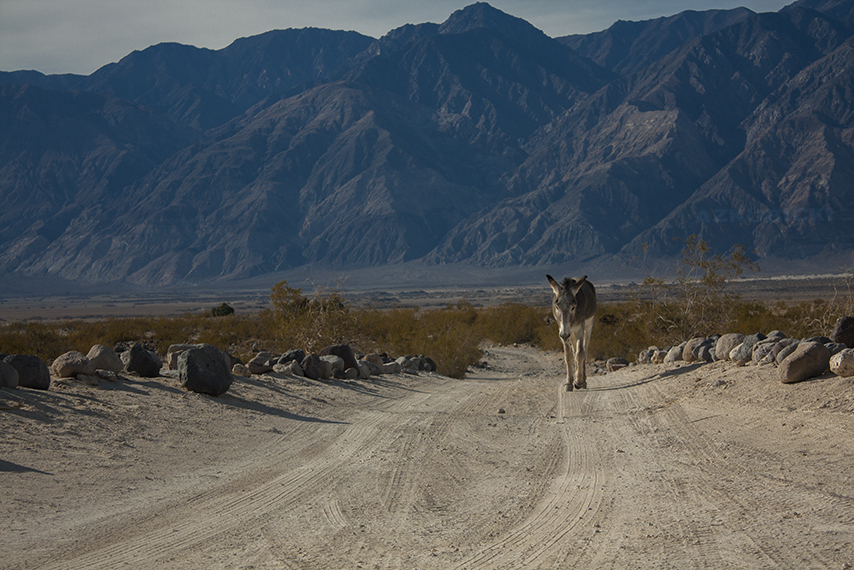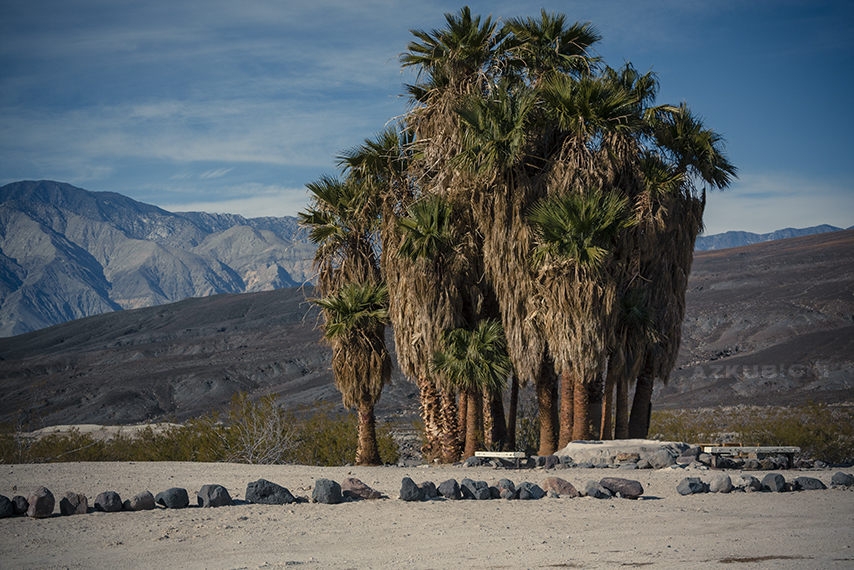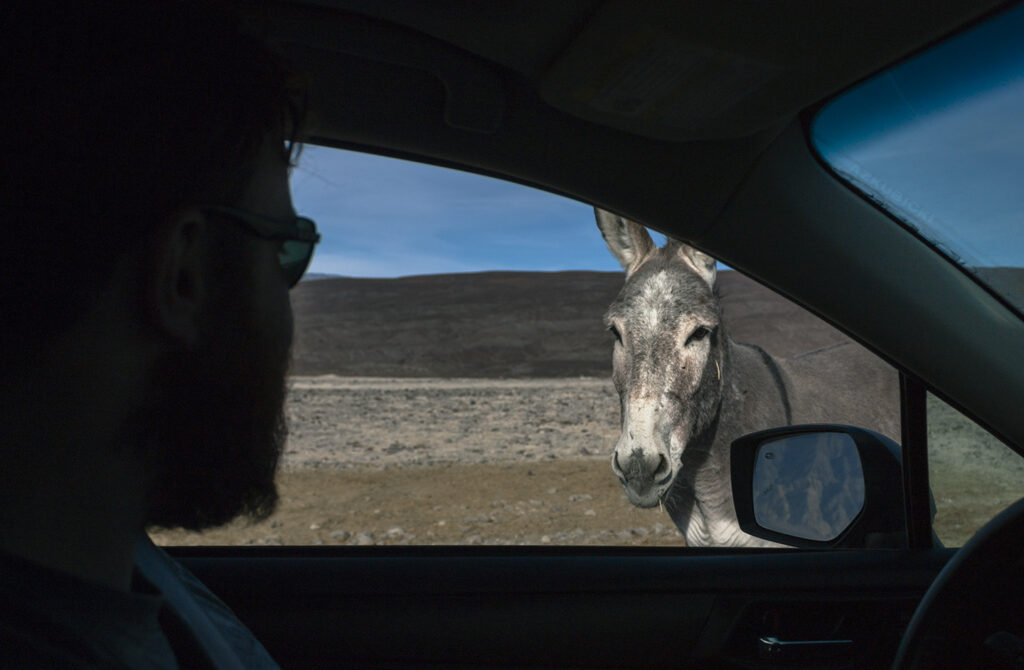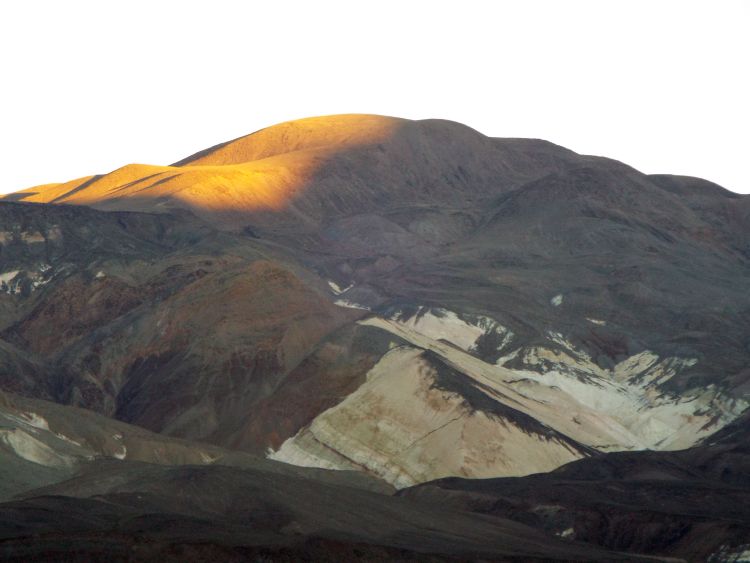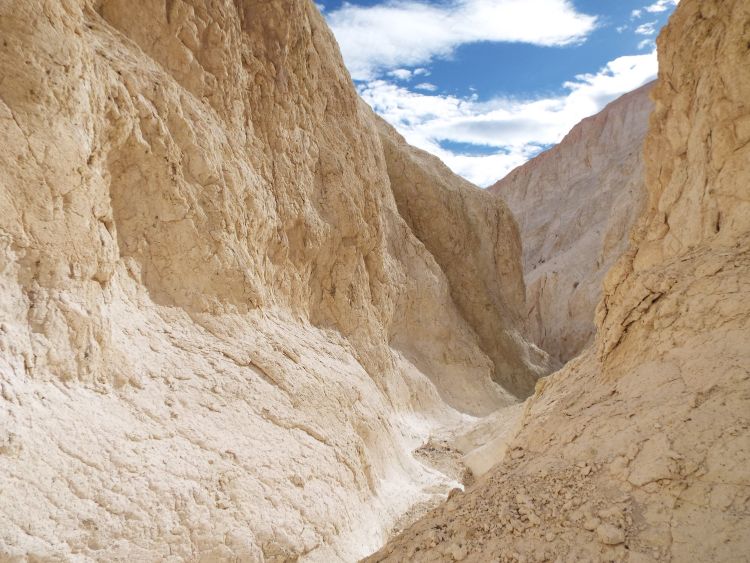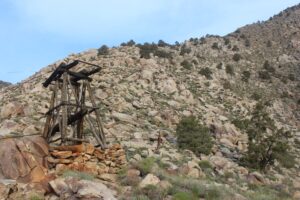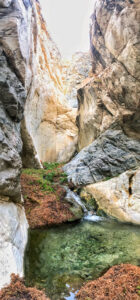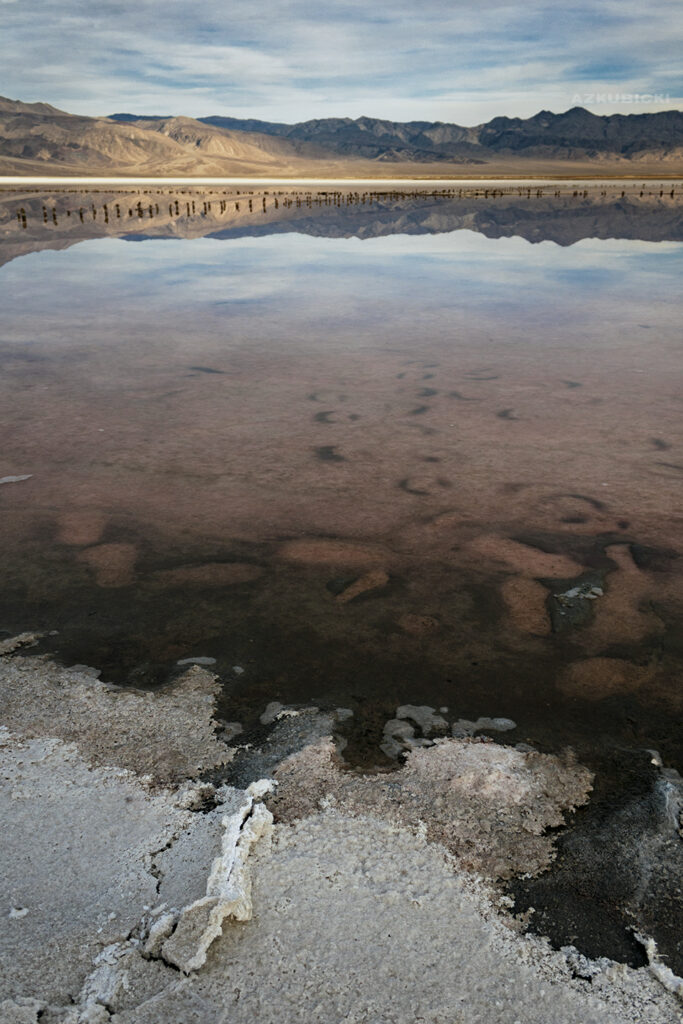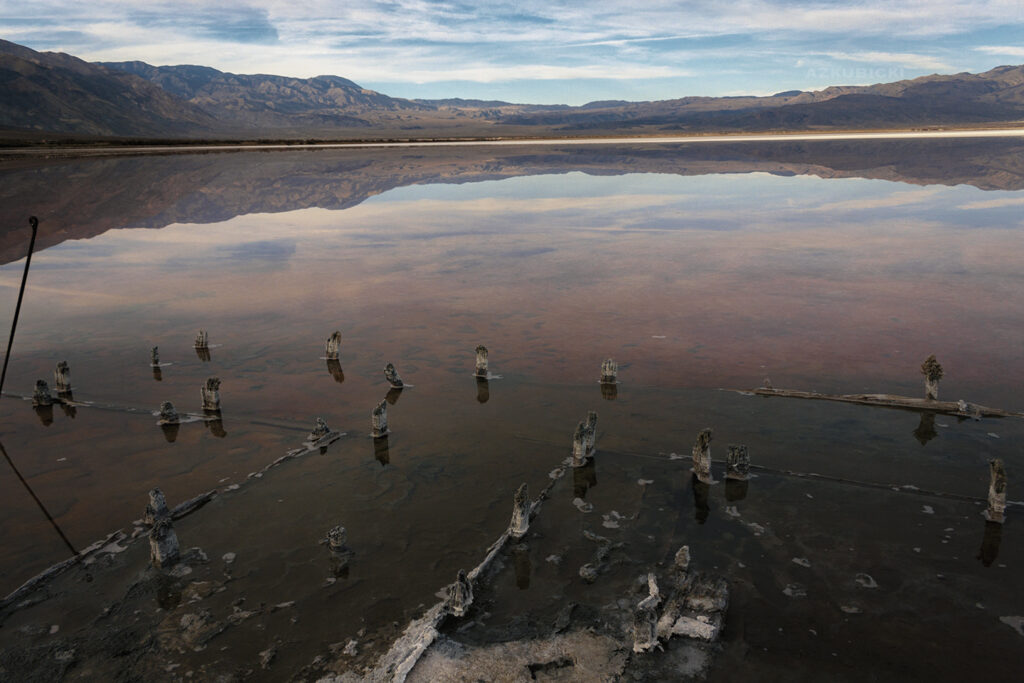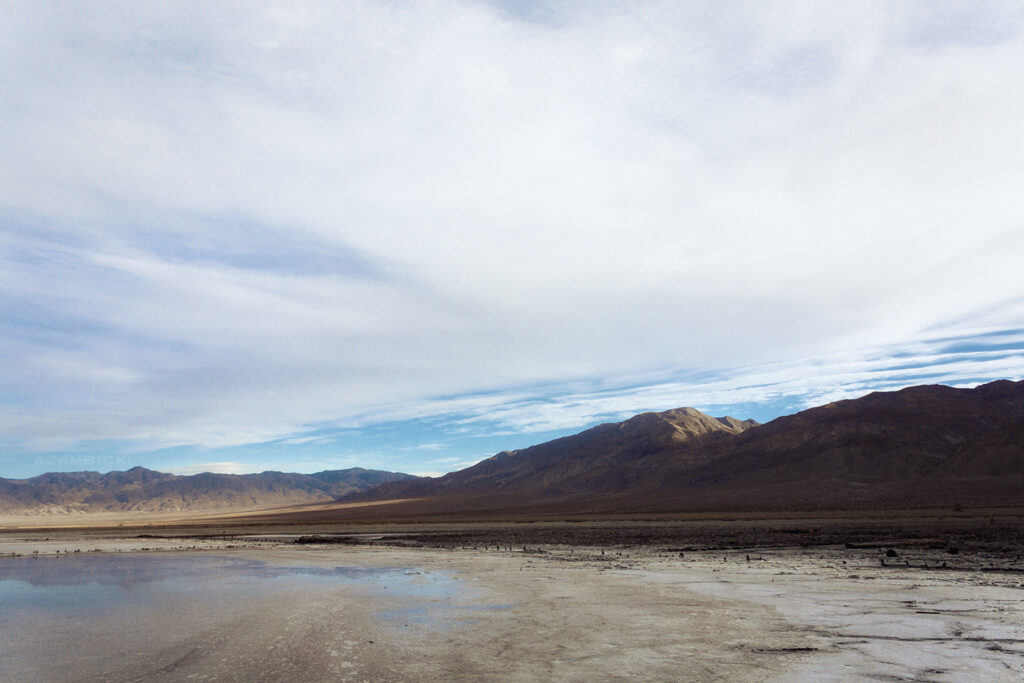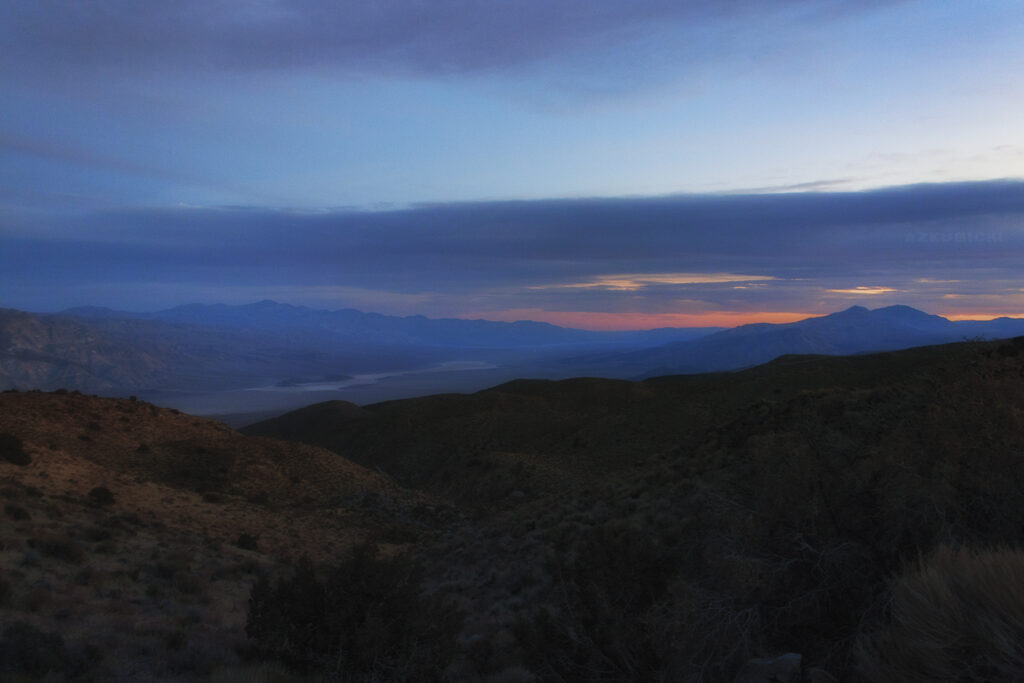The morning was cold and we hustled to pack up our gear. We turned off of Death Valley, away from the foot of the Inyos, and weaved through washes towards Saline Valley. Considerably more rough, we bumped around in our car until a spire greeted us off the side of the road. It was a strange pole, with a length of chain wound around its lower half, and bat motifs shaped out of metal protruding at random angles from its top half. We pulled over to take a look, and our friend explained that it marked the turnoff for the aptly named Bat Road which lead to Saline Dunes.
We continued on, and soon saw an out-of-place cluster of palm trees rise into view out of the desolate field of creosote and gravel, marking the location of the oasis we were bound for: Saline Valley Warm Springs. A lone car sat parked next to the palm grove, owned by a caretaker of the springs who met us as we parked our car and stepped out to take a look. Due to COVID they had drained the hot springs to ensure folks were socially distancing, but he invited us to explore. Uphill there was a small tub marked as the Source Pool for the springs, warning visitors to keep out of the broiling water. The hot waters of the source pool were carried downhill by pipes into two larger, manmade soaking pools, set with handrails and inlaid seats.
Surrounding the tubs was a wide swathe of pristinely manicured grass, delineated with wooden boardwalks that connected the soaking pools to a cluster of picnic tables and BBQ’s. Further past the tables was another boardwalk that lead to a cold water tub and shower, perched on an island within a small pond filled with goldfish. The entire area was shaded by palms and tall bushes, clean and immaculate – it was hard to believe we were deep in a desert valley, hours from civilization. We stayed for a while and watched a pair of ravens playfully diving through the air with one another, taking in the peace. Someone may have even fed them a few crackers…
As if the scene wasn’t already surreal, a burro had spotted us and – knowing visitors usually meant food – leisurely clomped behind us as we toured the grounds. These weren’t the only hot springs in the valley, but the lower (and largest) of three. After contenting ourselves with exploring we loaded back into the car and drove a bit further up the road to the middle springs. Our new hoofed friend trailed after our car, almost matching our speed as we crawled slowly up the rough road.
The next set of springs were a bit less exciting – they lacked the grass and shade of the lower springs, but were still shaded by another cluster of palms. We were more interested in greeting the lone burro determined to chase after us.
Past these were the highest, smallest, and most primitive pools. They were fenced in (presumably to keep the burros from soiling the vegetation) and were the only set that lacked a man-made tub. They were quite small, and not as hot as the other tubs, but the natural pool was the perfect size for our group of three. The water felt perfect as the heat of the afternoon began to set in, and we were partially shielded from the sun by reeds. Unfortunately I did not get photos of this tub because I was too busy enjoying the springs themselves.
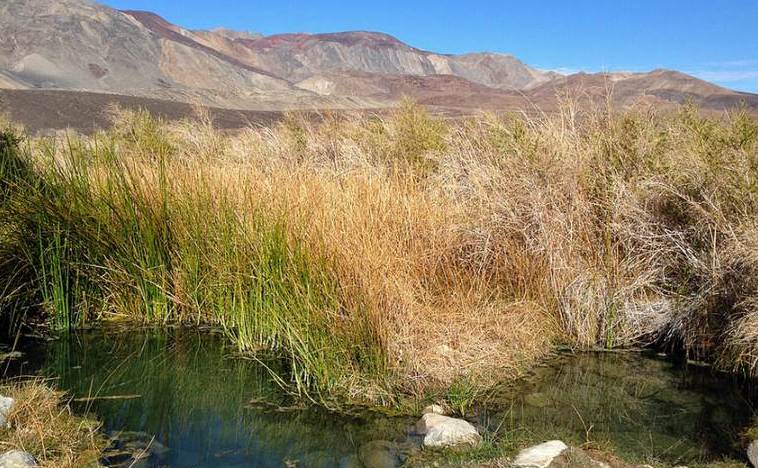
Topmost primitive pool
(source)
Past the final spring, Saline Valley Road continued on towards Steel Pass, which I mentioned in my previous post. From here on the road was far less maintained. I had read about a gorgeous hike through chalk-colored canyons that began before Steel Pass, so we ventured a bit further up the road, but the sharp basalt rocks that threatened our tires prompted us to turn tail and save it for another trip.
Still in the mood for a hike, Vincent suggested we give Beveridge Canyon a shot. To get there we needed to return to Death Valley Road and find a turnoff just a couple miles past where we had camped the night before, then follow washes up to where Beveridge Canyon cut through the Inyo Mountains in a winding labyrinth. This canyon was home to one of the most inhospitable and remote mining camps in the region, which lured only the most hardy of prospectors with the promise of gold. In its heyday during the 1870-1880’s a tramway was built to transport the ore, the remnants of which are still visible in the canyon. Unfortunately we met with similar obstacles and did not feel confident enough in our vehicles to handle the sharp teeth of the road. Another time, in a bigger car.
Instead, we continue south down Death Valley Road until we hit the Saline Valley Salt Lake. Here was purported to be one of the purest salt deposits in the word, and in the 1910’s another aerial tramway was constructed to transport salt out of the valley, up and down 7000 feet of elevation, and over 13 miles away to Keeler, where it would be exported via railroad. However, the tram only operated for about 20 years as the cost of hauling it out of the valley was higher than the salt’s worth, despite its purity.
The wooden spires of the towers still rise out of the Salt Lake and are visible climbing up the face of the Inyos in a neat line.
A vast and salt-encrusted playa surrounded the perfectly still waters of the salt lake, which reflected a picturesque mirror image of the sky and ridgelines. Ruins of what I assume were once boardwalks were the only feature that disrupted the flat surface of the water.
As the sun dipped closer to the horizon, we knew we needed to continue on towards our next campsite. To get there we would need to traverse Death Valley Road further south through Grapevine Canyon, ascend over South Pass into Panamint Valley, and finally settle in Lee Flat. Most of our drive took place during the golden light of sunset, which beautifully lit up Grapevine Canyon. Overall it was much less harrowing than our traverse over North Pass, with the exception of the highest point at which you get to look down on an absolutely dizzying view of the entirety of Panamint Valley. Still gives me chills to think back on it.
Finally we pull into Lee Flat, which is a forest of Joshua Trees that offers stunning views of the nearby Cerro Gordo Peak. I planned to stay up a bit and take some photos of the night sky, but at 5500 ft elevation it was not only bitterly cold but high gusts of wind made staying outside intolerable. We crowded our two cars next to each other and fought desperately to make hot dinner, then retired for the night.
<< Back to Part I | Read Part III (coming soon) >>
